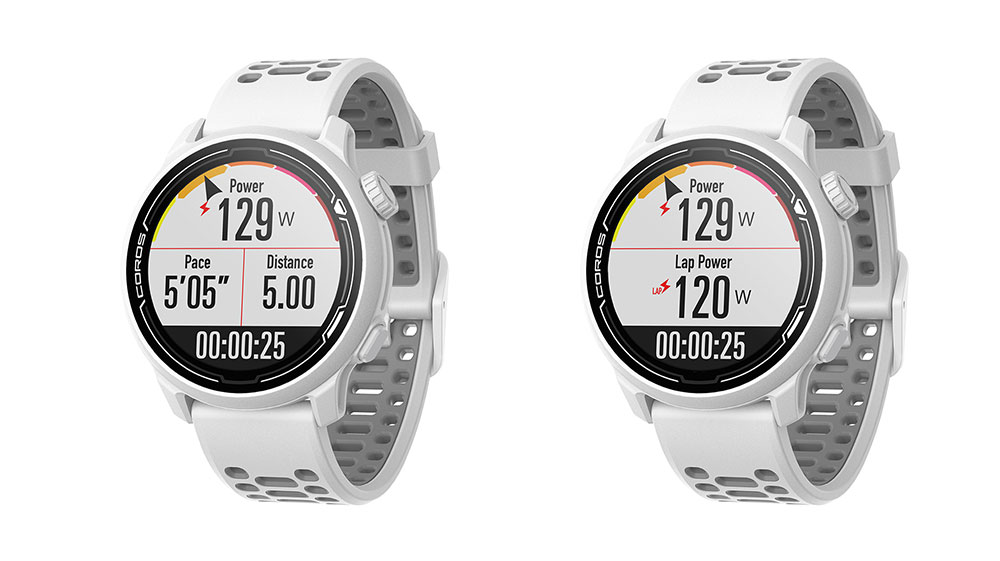What Is Running Power And How Can It Help You Improve?
Using power to judge your effort when running requires a mental shift, but it can help you pace your training and races to perfection

There are three traditional methods that runners use to pace their training sessions and races. The simplest of these is to run on feel, gauging your effort based on your perceived rate of exertion. The most common is to run according to pace, especially in races when you know the target pace to achieve a PB. Finally, as heart rate monitors have become standard on running watches and fitness trackers, heart rate zones have also become a useful method to judge your efforts.
All three have their merits and all can work for any runner, but all have their faults too. We’re all liable to misjudge our efforts and overdo it when running on feel, while a raw pace number doesn’t take into account hills or weather conditions. Heart rate is better on this front, but wrist devices can suffer from accuracy problems, and your heart rate can vary based on things like stress and how much you’ve slept.
All this brings us to running power, which is a measurement that advocates claim is a better way to judge your efforts in all conditions, regardless of variables like terrain and the weather. To learn more about it, we spoke to Angus Nelson, co-founder of Stryd, which makes a power meter.
What is running power?
“Running power represents the intensity you’re running at,” says Nelson, and getting the intensity right is key when following a training plan.
“For pure runners, using pace as a training metric works fine if you’re running on a treadmill, track, or other very flat surface with no wind or temperature changes. You can keep an even pace and your pace represents your intensity. But when you run outside and you hit hills, or it’s windy, or the temperature or humidity changes, you’re going to be working a lot harder to keep a consistent pace.”
On those occasions, keeping your power output steady means your effort will be consistent, whereas trying to hold a certain pace could mean the training run is too hard, because you’re overdoing it up hills, or even too easy, if you have a tailwind pushing you along all the way. Either way, you won’t be getting as many benefits from that run as if you had stuck to the effort specified in your plan, and if you have worked too hard to hold a pace in unfavourable conditions it could affect the quality of the rest of your week’s training.
“Instead of trying to guess the right pace value as the conditions change, it’s easier to run on your energy expenditure directly – to run based on a power number,” Nelson says. “So you’re not trying to keep to seven minutes per mile, you’re trying to keep the energy expenditure that correlates with that speed. You might be given a power target of 300 watts, which correlates to seven-minute paces on flat ground, but when you start running up hill the pace changes. The power target doesn’t.”
What factors combine to produce the power number?
There are various power meters out there that use different factors to produce the wattage number you are given, but generally the idea is to take into account your speed plus external factors like hills, and in the case of Stryd conditions like wind, temperature and humidity.
“The Stryd pod connects to laces on the shoe,” Nelson says. “It can understand the effort you’re putting in because it measures the motion of the foot, and then it measures the environment you’re in and how that’s affecting you.”

How can power help you improve as a runner?
“If you’re following a structured plan, you’re going to be doing some easy runs, some hard workouts, some racing,” says Nelson. “There is an ideal intensity to get the maximum benefits from training and run as fast as you can on race day. The most important thing is to establish the targets you should be training and running at. If you can do that you’ll be leaps and bounds ahead of other runners.”
How do you establish those power targets?
It takes time to get used to power as a runner, and devices like Stryd also need some time to calibrate themselves to you and set your target power zones.
“[With Stryd] this is done through a system called auto calculated critical power,” says Nelson. “This takes all of your running data, profiles you as a runner and works out those targets. In the first few weeks you have the device, you have to tell the system what you’re capable of. You need to do three types of runs in the first few weeks – a short, fast sprint effort, a 10- to 20-minute tempo effort and an endurance effort. Stryd will then have a very good idea of what kind of performance you’re capable of, and that will determine what zones you should be training in and what effort you should be racing at.”
How does power help on race day?
“This is really the breakthrough moment for a lot of people who try running with power,” says Nelson. “Folks have a tendency to do a lot of strange things when racing – like start too fast, or push the hills too hard. It’s easy to get caught up in the atmosphere and stick with people who they consider to be of the same ability as them. But when folks start running with Stryd they have the confidence to run to the power value. They see those packs of runners push up the hill too hard, start too hard, surge mid-race – all these things are not optimal behaviour if you’re trying to produce a max-effort evenly paced race. People realise they weren’t taking control of their pacing strategy, but with Stryd they can.”
Power meters are especially useful for trail and cross-country races, or road events where you can expect undulating terrain or rough weather conditions.
“If you’re a trail runner, a cross-country runner or a road runner who loves challenges, you’re going to get a greater benefit from this technology,” says Nelson. “You’re going to be able to run faster in these difficult conditions.”
The Best Ways To Track Running Power

Running power has become a mainstream metric on running watches, which can measure it without the need for an external pod. Polar were the first to start offering this, followed by Coros, then the Apple Watch and most recently Garmin, which added running power to the Epix 2, Fenix 7 and Enduro 2 via its Beta program in early October ahead of a full launch later this year (when the Forerunner 255, 955 and 945 LTE will also get wrist-based power).
Bear in mind that these power measurements will probably differ from brand to brand because it is a subjective measure, and the inputs and algorithms used by each company to give a power reading will be different. As long as they are consistent, running power can be a useful metric to guide your training and racing. It just takes a bit of time to align your effort levels to the numbers produced by your watch.
There are still pods out there for measuring running power, of course, and Stryd remains the leader in this field, in great part because the library of workouts and training plans based around power helps you to make the most of the data it collects. The Stryd footpod is also compatible with all major sports watch brands, so you can see the pod’s readings live on your watch. Stryd is about to launch an improved footpod, available to pre-order for delivery in November 2022.
Get the Coach Newsletter
Sign up for workout ideas, training advice, reviews of the latest gear and more.

Nick Harris-Fry is a journalist who has been covering health and fitness since 2015. Nick is an avid runner, covering 70-110km a week, which gives him ample opportunity to test a wide range of running shoes and running gear. He is also the chief tester for fitness trackers and running watches, treadmills and exercise bikes, and workout headphones.









